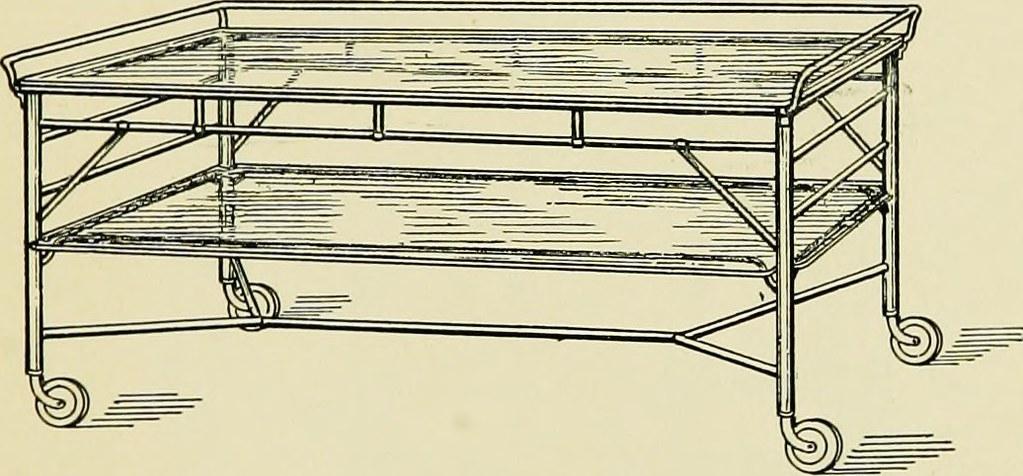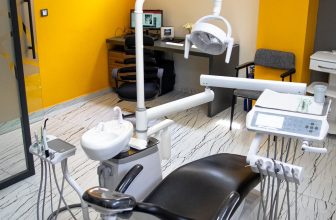
Inversion therapy has gained popularity as a natural and non-invasive method for relieving back pain and improving overall well-being. Among the various tools used in this practice, the inversion table has emerged as a reliable and effective device. Whether you’re a seasoned invert or a beginner looking to explore the benefits, this comprehensive guide will walk you through the ins and outs of using an inversion table. From setting up the equipment to executing correct inversion techniques, we will provide you with the necessary knowledge and precautions to maximize your results and ensure a safe experience. So sit back, or rather “hang back,” and let us guide you through the fascinating world of inversion therapy.
Introduction to Inversion Tables
An inversion table is a versatile and effective tool for relieving back pain, improving spinal health, and increasing flexibility. Using an inversion table can seem intimidating at first, but with proper guidance and understanding, you can experience the many benefits it has to offer. In this post, we will explore the key elements of using an inversion table effectively.
Adjusting the Table: Before using an inversion table, it is essential to ensure that it is properly adjusted to suit your height and comfort level. Most inversion tables come with adjustable settings, allowing you to customize the experience for your specific needs. Adjust the height to match yours, making sure your feet are secure and comfortable while inverted. It’s also important to check that the ankle clamps are secure but not too tight.
Safety Precautions: Like with any exercise equipment, safety should be a priority when using an inversion table. Start with a gentle incline, gradually increasing the angle as you become more comfortable. Always have someone nearby when you first try using the inversion table and avoid going to full inversion until you feel completely confident. If you experience any pain or discomfort during inversion, immediately return to an upright position.
Engaging Proper Technique: To fully benefit from an inversion table, it is crucial to engage proper technique. Start by placing your hands on the sides of the table and slowly lean back, allowing your body to invert. Maintain a relaxed posture with your shoulders back and your chin slightly tucked. Take deep breaths and allow gravity to gently stretch your spine. Start with short durations, gradually working your way up to longer sessions.
Targeting Specific Areas: An inversion table can provide relief to various parts of your body. If you’re looking to target lower back pain, position your body closer to the top of the table. To alleviate tension in the shoulders and upper back, position yourself towards the bottom. Experiment with different positions to find what works best for you and provides the most relief in your target areas.
Gradual Progression: As with any new exercise routine or equipment, it is important to start slowly and gradually increase the intensity. Begin with short sessions, such as 1-2 minutes per day, and gradually increase to 5-10 minutes as you become more comfortable. Remember that consistency is key to experiencing the long-term benefits of using an inversion table, so aim for regular sessions throughout the week.
Using an inversion table can be a transformative experience for your overall well-being. By following these guidelines, you can use this effective tool safely and effectively. Remember to consult with a healthcare professional if you have any underlying health issues or concerns before incorporating an inversion table into your routine.

Choosing the Right Inversion Table for Your Needs
When it comes to finding the perfect inversion table for your needs, there are a few key factors to consider. The right table can make all the difference in achieving optimal results and ensuring your safety during inversion therapy. Here are some important points to keep in mind when making your decision:
Weight Capacity: One of the first things to consider is the weight capacity of the inversion table. It is crucial to choose a table that can easily accommodate your weight to ensure stability and safety during your inversion exercises. Be sure to check the manufacturer’s specifications and choose a table that can handle your weight without compromising its functionality.
Adjustable Features: Different individuals may require different inversion angles and settings. Look for a table with adjustable features that allow you to customize your inversion experience. This can include adjustable height settings, angle control, and ankle support options. Having these adjustable features will enable you to find the most comfortable and effective position for your specific needs.
Safety Features: Safety should be a top priority when choosing an inversion table. Look for features such as padded backrests, ankle straps, and sturdy frames that provide stability and support. A safety strap or bar can also be an essential feature to ensure your security during inversion. Don’t compromise on safety features when selecting your inversion table.
Durability and Quality: Investing in a high-quality inversion table will ensure its longevity and durability. Look for tables made from sturdy materials such as steel or heavy-duty plastic. Reading reviews and checking customer feedback can also help you gauge the durability and overall quality of different models. Remember, a well-built table will not only last longer but also provide a more comfortable and secure inversion experience.
Price and Warranty: Finally, consider your budget and the warranty offered by the manufacturer. Inversion tables come in a range of prices, so it’s essential to find one that fits within your budget. However, keep in mind that investing in a higher-quality table with a longer warranty may be worth it in the long run. A good warranty will give you peace of mind and protect you against any defects or issues that may arise.
Remember, choosing the right inversion table is a personal decision based on your specific needs and requirements. By considering factors such as weight capacity, adjustable features, safety, durability, and price, you can find the perfect table that will help you achieve your inversion therapy goals safely and effectively. So take your time, do your research, and make an informed decision to reap the full benefits of inversion therapy.

Proper Techniques and Safety Tips for Using an Inversion Table
Using an inversion table can provide numerous benefits for your spine and overall well-being. However, it is essential to use this equipment correctly and prioritize safety to avoid any potential risks or injuries. Follow these proper techniques and safety tips to make the most out of your inversion table experience:
1. Start Slowly and Gradually Increase Inversion Time
When using an inversion table for the first time, it’s crucial to start slowly and allow your body to adjust to the inverted position. Begin with a small angle of inversion, such as 15 degrees, and gradually increase it over time as your body becomes more comfortable. Initially, limit your inversion time to a few minutes and gradually extend it as you gain confidence.
2. Properly Adjust the Table for Your Height
Each person’s body is different, so it’s essential to adjust the inversion table to fit your height. Ensure that your head is comfortably supported by the table’s headrest and that your feet are securely locked in place. Additionally, check that the ankle grip system is properly adjusted to provide a secure and comfortable fit. This will help maintain correct alignment and reduce the risk of discomfort or injury.
3. Use a Spotter or Safety Strap
Although most inversion tables are designed to be safe to use independently, it’s always a good idea to have someone present or use a safety strap for added security. A spotter can provide assistance in case you experience any discomfort or difficulty returning to an upright position. Alternatively, a safety strap can be used as an extra precaution to ensure you remain secure while inverted.
4. Listen to Your Body and Modify as Needed
Paying attention to your body’s signals is crucial when using an inversion table. If you experience any sharp or prolonged discomfort, dizziness, or difficulty breathing, it’s essential to stop and return to an upright position immediately. Modify the inversion angle or duration as needed to suit your comfort level. Consult with a healthcare professional if you have any underlying medical conditions or concerns.
5. Follow the Manufacturer’s Instructions and Maintenance Guidelines
Always carefully read and follow the manufacturer’s instructions when using an inversion table. They will provide specific guidelines on weight capacity, assembly, usage, and maintenance. Regularly inspect the table for any signs of wear or damage, and clean it according to the manufacturer’s recommendations. By adhering to these guidelines, you can ensure the longevity and safety of your inversion table.

Inversion Table Maintenance and Care Tips
Proper maintenance and care of your inversion table are essential to ensure its longevity and safe usage. By following these tips, you can maximize the benefits of your inversion therapy and keep your table in excellent working condition for years to come.
1. Regular Cleaning
Inversion tables should be regularly cleaned to maintain hygiene and prevent the buildup of dirt and debris. Wipe down the surfaces with a mild soap and water solution or a disinfectant wipe. Pay close attention to the handles and ankle holders, as these areas usually come into direct contact with your body.
2. Lubricate Moving Parts
Keep your inversion table’s moving parts well-lubricated to ensure smooth operation. Check the manufacturer’s instructions for the recommended lubricant type and intervals. Apply the lubricant to the pivot points, hinges, and any other parts that require it. Regular lubrication will prevent squeaking and prolong the life of your table.
3. Check for Loose Bolts
Regularly inspect your inversion table for loose bolts and tighten them as needed. Loose bolts can compromise the stability and safety of your table, so it’s crucial to address them promptly. Refer to the user manual or contact the manufacturer if you require assistance in identifying and tightening the bolts.
4. Store Properly
When not in use, it’s important to store your inversion table correctly. Ensure you have enough space to fully assemble and disassemble the table, as improper storage can lead to damage. If your table is foldable, carefully fold it following the manufacturer’s instructions. If space permits, you can also consider investing in a dedicated storage bag or cover to protect the table from dust and other potential contaminants.
5. Inspect Straps and Padding
Regularly inspect the straps and padding of your inversion table. Over time, these components may experience wear and tear, affecting the level of comfort and safety. Replace any damaged or worn-out straps or padding to maintain optimal support during inversion therapy. Consult the manufacturer or authorized retailers for compatible replacement parts.
| Tip | Benefit |
|---|---|
| Keep the table clean | Maintains hygiene and prevents potential infections |
| Lubricate moving parts | Ensures smooth operation and prolongs the table’s lifespan |
| Tighten loose bolts | Enhances stability and overall safety during inversion |
| Proper storage | Prevents unnecessary damage and ensures convenient access |
| Inspect straps and padding | Maintains comfortability and support for effective therapy |

Maximizing the Benefits of Inversion Therapy
Using an inversion table is a popular and effective way to maximize the benefits of inversion therapy. Inversion therapy involves hanging upside down or at an inverted angle to relieve back pain and improve overall spinal health. Whether you are a beginner or an experienced user, here are some tips on how to make the most out of your inversion table experience.
Adjust the table to your comfort level: Before starting any inversion therapy session, it is important to adjust the table to your comfort level. Most inversion tables allow you to control the angle of inversion and the degree of incline. Start with a gentle angle and gradually increase it as you become more accustomed to the sensation of being upside down. Always listen to your body and only go as far as you feel comfortable.
Use proper positioning: Proper positioning on the inversion table is crucial for maximum benefits and safety. Start by securely fastening your ankles to the designated ankle brackets. The ankle brackets should be snug but not too tight, allowing for a comfortable fit. Once your ankles are secure, slowly raise your arms above your head and straighten your body out on the table. This will help to stretch and decompress your spine more effectively.
Relax and breathe: As you invert on the table, it is important to relax your muscles and breathe deeply. Take slow, deep breaths, focusing on releasing tension and allowing your body to fully relax. The more relaxed you are, the more effective the inversion therapy will be in relieving back pain and improving circulation.
Incorporate gentle movements: To enhance the benefits of inversion therapy, consider incorporating gentle movements while inverted. This can include rocking back and forth, side to side, or performing simple stretches. These movements help to further stretch and decompress your spine, promoting better alignment and flexibility.
Gradually increase inversion time: If you are new to inversion therapy, it is recommended to start with shorter inversion sessions and gradually increase the time as your body adjusts. Begin with just a few minutes per session and gradually work your way up to 10-15 minutes or longer. It is important to listen to your body and not exceed your comfort level.
In summary, using an inversion table is an effective way to maximize the benefits of inversion therapy. By adjusting the table to your comfort level, using proper positioning, relaxing and breathing deeply, incorporating gentle movements, and gradually increasing inversion time, you can experience the full potential of this therapy. Always consult with your healthcare provider before starting any new therapy or if you have any pre-existing medical conditions. Happy inverting!
Q&A
Q: What is an inversion table and what is it used for?
A: An inversion table is a piece of fitness equipment that allows you to hang upside down or at an inverted angle. It is typically used for relieving back pain, improving spine health, and increasing circulation.
Q: How does an inversion table work?
A: When you lie down on the inversion table and secure yourself with straps or ankle holders, you can gradually invert yourself to the desired angle. By inverting, the gravitational pull on your body is reversed, which decompresses your spine and reduces pressure on your joints and discs.
Q: What are the benefits of using an inversion table?
A: Using an inversion table can have several benefits, including reduced back pain, improved posture, increased flexibility, better circulation, and relief from muscle tension. It can also help to realign the spine, increase the space between vertebrae, and enhance the flow of nutrients to the discs.
Q: Are there any risks associated with using an inversion table?
A: While inversion therapy is generally safe for most people, there are a few risks to consider. Individuals with certain medical conditions, such as high blood pressure, glaucoma, heart disease, or pregnancy, should consult with their healthcare provider before using an inversion table. It is important to follow the manufacturer’s instructions, start with a small inversion angle, and listen to your body for any discomfort or pain.
Q: How often and for how long should one use an inversion table?
A: The duration and frequency of using an inversion table can vary based on individual needs and comfort levels. For beginners, it’s advisable to start with short sessions of 1 to 2 minutes, gradually increasing the time as your body adjusts to the inversion. Ideally, you should aim for around 5-10 minutes per session, 2-3 times a day. However, it’s crucial to listen to your body and consult with a healthcare professional for personalized guidance.
Q: Can anyone use an inversion table?
A: While inversion therapy is generally safe, there are certain restrictions. Individuals with specific health conditions, such as retinal detachment, osteoporosis, or recent acute back injuries, should avoid using an inversion table. Those with vertigo or glaucoma should proceed with caution. If you have uncertainties or medical concerns, consulting with a healthcare professional is recommended.
Q: How do I choose the right inversion table?
A: When selecting an inversion table, consider factors such as weight capacity, height adjustment options, and safety features like ankle locking mechanisms or padded supports. It’s also important to ensure stability and durability of the table. Reading customer reviews and seeking recommendations can help in making an informed decision.
Q: Are there any precautions I should take while using an inversion table?
A: Yes, there are a few precautions to keep in mind. Always ensure that the inversion table is placed on a level surface and secure it properly before using it. Wear comfortable clothing, preferably non-slippery, and start with a gentle inversion angle to allow your body to adapt. Stay hydrated and avoid eating a heavy meal before using the table. Lastly, if you feel any pain, dizziness, or discomfort, discontinue the inversion immediately and seek medical advice if necessary.
Q: Can an inversion table be used for other purposes besides back pain relief?
A: While inversion tables are primarily designed for back pain relief and spine health, some people also use them to stretch and strengthen core muscles, improve posture, and increase overall flexibility. However, it’s important to consult with a healthcare professional or a qualified fitness trainer before using an inversion table for purposes other than pain relief.
Q: Are there any alternatives to using an inversion table?
A: Yes, there are alternative methods to achieve similar benefits. Gentle yoga poses, such as downward-facing dog or legs-up-the-wall, can provide inversion-like effects without the need for specialized equipment. Additionally, physical therapy exercises, spinal traction devices, or visiting a chiropractor or physical therapist can be effective alternatives for addressing back pain or improving spine health. Consider consulting a healthcare professional to determine the best approach for your specific condition. In conclusion, the use of an inversion table can provide numerous benefits for individuals seeking relief from back pain and improving overall spinal health. By following the basic guidelines outlined in this article, you can safely and effectively incorporate inversion therapy into your daily routine.
Remember to start slow, listening to your body’s response and gradually increasing the inversion angle and duration over time. Always consult with a healthcare professional, particularly if you have pre-existing medical conditions or are taking any medications.
Inversion therapy should not be seen as a standalone solution for back pain, but rather as a complementary technique alongside other forms of treatment, such as physical therapy or chiropractic care. It’s important to remain consistent and patient in order to achieve optimal results.
Whether you’re a novice or an experienced inversion table user, it’s crucial to prioritize safety precautions, such as securing your feet and wearing appropriate footwear during inversion. Regular maintenance and periodic inspection of your inversion table are also essential to ensure its longevity and safe usage.
Ultimately, with proper form, caution, and persistence, an inversion table can be a valuable tool in promoting spinal decompression, relieving muscle tension, and enhancing overall well-being. By incorporating inversion therapy into your lifestyle, you may find yourself experiencing a greater range of motion, improved posture, and a reduction in back pain.
Always listen to your body and consult with a healthcare professional if you have any doubts or concerns regarding the use of an inversion table. With these important considerations in mind, you can embark on a safe and beneficial journey towards a healthier spine, one inversion at a time.






